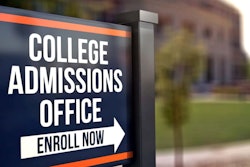An additional 1,600-1,700 students at Emory University received grants and scholarships instead of loans in their financial aid packages this fall, the Atlanta-based institution announced recently, more than doubling the number of undergraduates expected to finish school with limited or no debt. The increase is due to the expansion of the university’s Emory Advantage program, which replaces loans with grants for students from low and middle-income families, to every student receiving need-based aid.
 John Leach, associate vice provost for enrollment and university financial aid at Emory University
John Leach, associate vice provost for enrollment and university financial aid at Emory University
The additional grants, which averaged $4,700 for the current school year, cost the university approximately $7 million dollars, according to Leach. They are funded by growth in Emory’s endowment from the 2020-21 year. Although the replacement of loans with grants will not eliminate debt entirely (students may still take out loans to meet their estimated family contributions or for other reasons), Leach expects the benefits to be significant.
“We expect the debt of our undergraduate population to be cut roughly in half,” he said, “from about $19,000-$20,000 of need-based loan debt to about $10,000.”
Emory’s expansion of its no-loan policy is part of a trend towards replacing debt with grants, at least among wealthy schools. As of 2019, 54 institutions have some form of no-loan policy, according to a study by Dr. Chris Bennett, a research education analyst at RTI International. These schools include nearly all of the Ivy League.
Bennett believes that these programs can powerfully affect not only the students who receive grants but schools that are trying to change the economic makeup of their campuses.
“One of the main goals that institutions state is that they’re looking to diversify their student bodies,” he said. “I found that programs like this were the strongest design to increase students who are Pell Grant recipients. That really can change what it’s like to be on campus.”




















